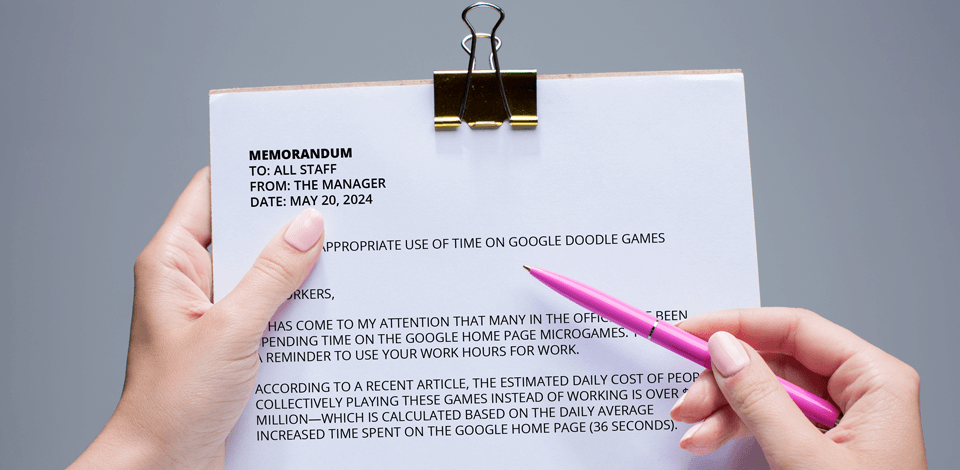
Recently, I had to write a memo for my colleagues who are photographers. A memo is different from an email because it is sent to a whole department or even the entire company. That’s why it’s important to know how to format a memo, not just what to say.
A memo is a short but official message used to share important information with a team or organization. Unlike emails, which are more casual, memos are for serious and official messages. The main purpose of writing a memo is to clearly explain what is happening, why it’s important, and what actions need to be taken.
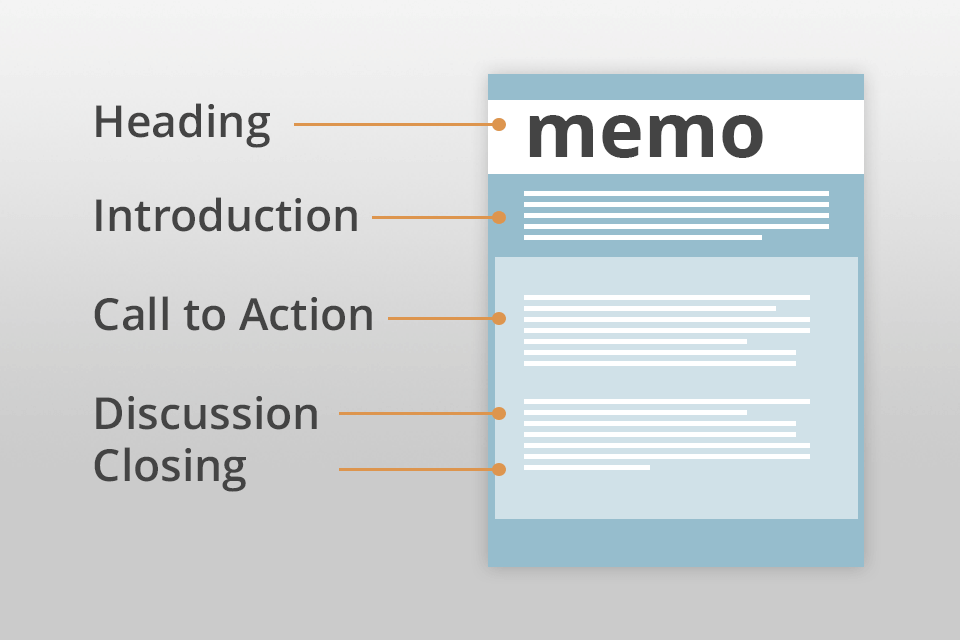
A memo should include the following:
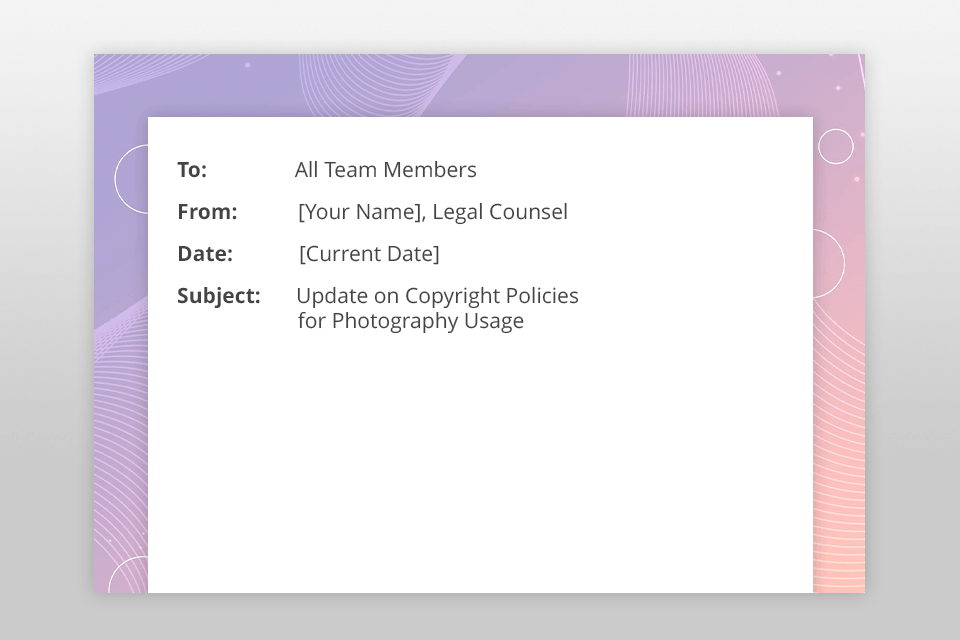
The heading of a memo should include these parts:
To — who the memo is for, like 'All Employees' or the name of a department
From — your name and job title
Date — when the memo is being sent
Subject — what the memo is about
Make sure the subject is very clear. For example, instead of saying 'Personnel Update,' you could say 'Alex Johnson Promoted to VP of Marketing'.
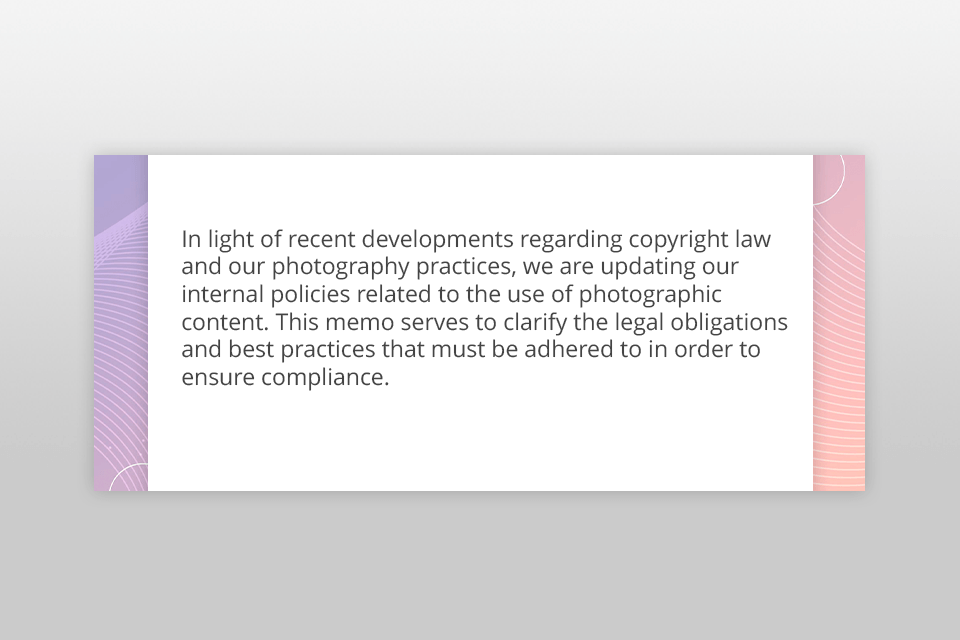
In the introduction of the memo, briefly explain the situation, issue, or problem. This first part tells people why the memo is important and shares the main information. For example, it might talk about changes in leadership, new processes, or shifts in project priorities.
This section might also include things like:
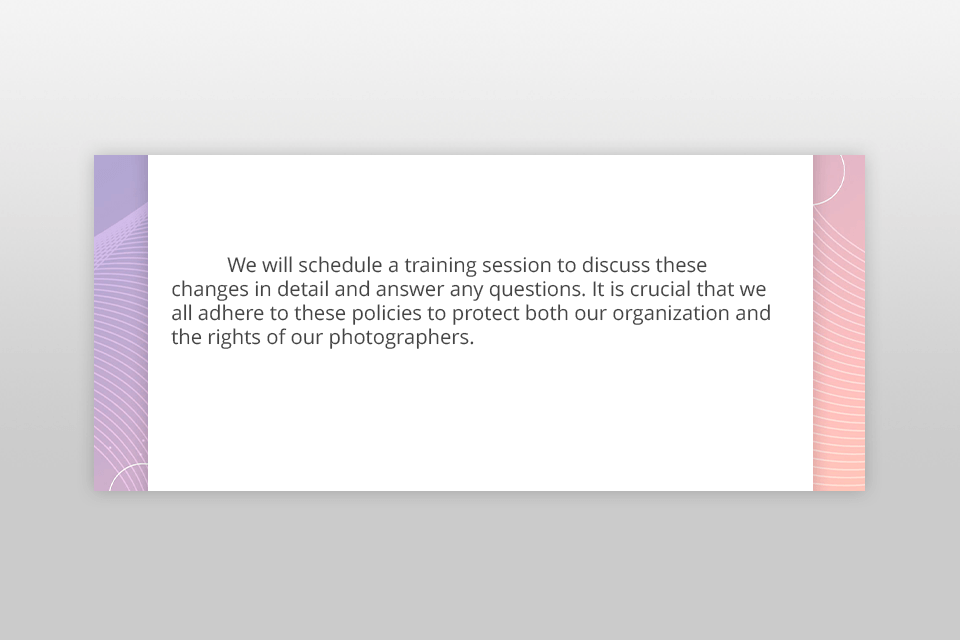
Based on the type of memo, make sure to include a clear action for your readers, like:
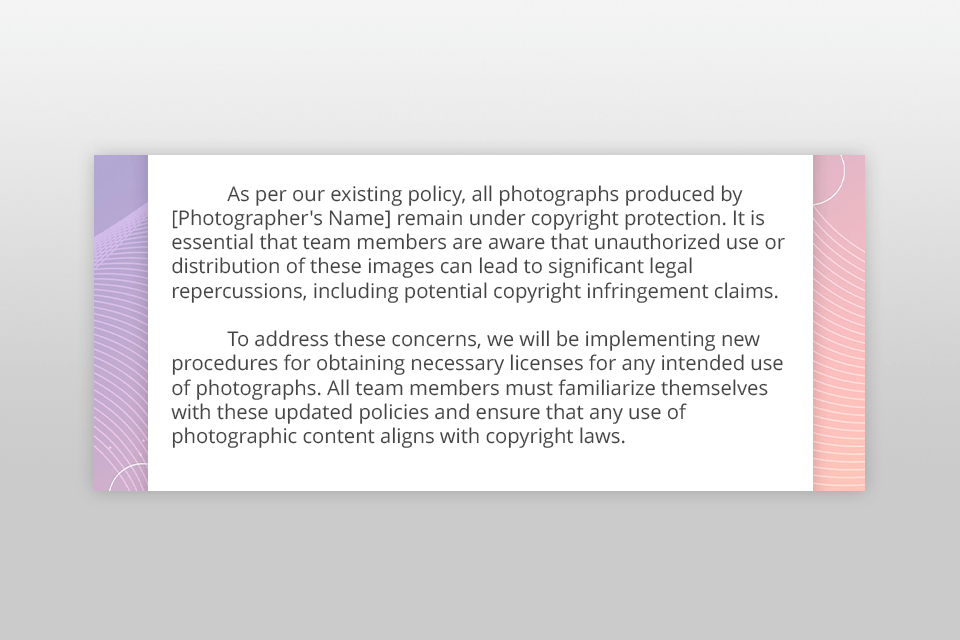
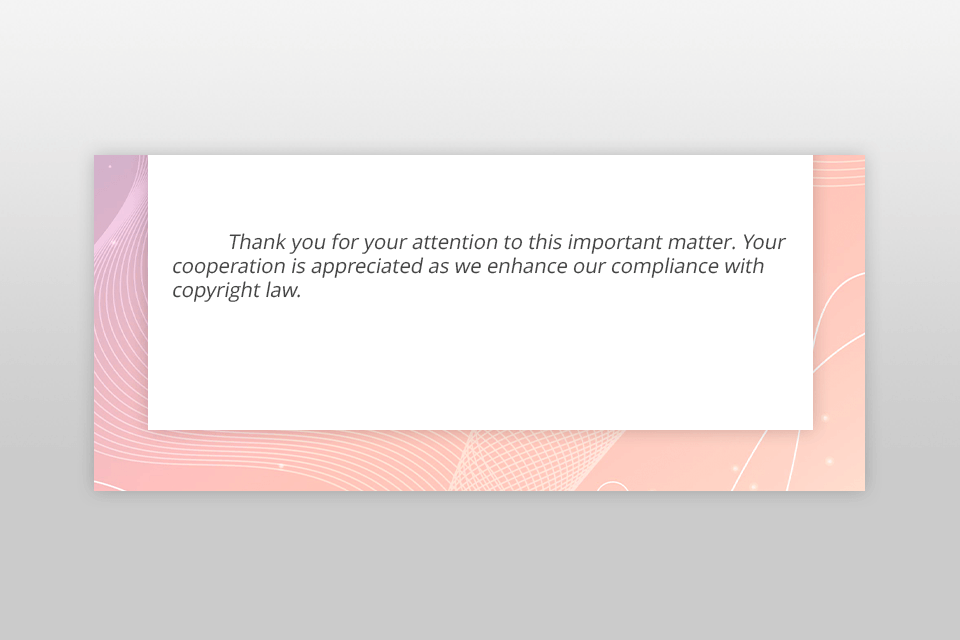
The closing part of your memo is a chance to wrap things up politely. If you want to become a professional photographer, practice this section of the memo. It’s a good idea to remind your readers what action you want them to take one more time.
Usually, memos don’t end with a goodbye, but if you want to include one, keep it short. Think about how your memo will impact your readers and use this last paragraph to create a polite ending.
Here are some ideas for conclusions:
Memos are different from other business documents because of their structure and purpose, which is why it is important to know how to write a memo effectively. Unlike reports, which can be long and detailed, memos are short and to the point.
Memos are usually used for communication within an organization, while other documents, like a photography business plan or proposals, are often meant for outside partners or clients.
| Memo | Report | Business Plan | Official letter | |
|---|---|---|---|---|
|
Purpose
|
Internal communication |
Data analysis, results |
Strategic planning |
External communication |
|
Format |
Informal but official
|
Formal |
Formal
|
Formal |
|
Target Audience
|
Employees |
Management, interested parties |
Investors, partners |
Clients, partners |
|
Tone |
Clear and direct
|
Formal |
Formal |
Formal |
|
Length
|
200-300 words |
Can be 1000+ |
Usually 3000+
|
Usually 100-200 words |
|
Structure
|
Short and concise |
Detailed, with sections |
Thorough, with various sections |
Formal, structured
|
I collected all the types of memos I use at work. Even if you want to start a photography business with no money, it’s important to understand the differences between all the memo types, why we write them, and what content they include.
| Purpose | Content | Example | |
|---|---|---|---|
|
Informational Memo |
To inform the photography team about updates, changes, or important events related to a project or studio operations.
|
General information without expecting a response |
A memo announcing a new editing software or studio policy update |
|
Request Memo
|
To request specific tasks or information from the photography team, clients, or collaborators |
A clear request for action or data, often with a deadline |
A memo requesting model releases or approval for meme campaign |
|
Confirmation Memo
|
To confirm the details of an agreement, booking, or conversation, usually following a verbal discussion |
Summarizes what was agreed upon for future reference |
A memo confirming a photoshoot booking or project scope
|
|
Reminder Memo |
To remind the team or clients of upcoming deadlines, appointments, or tasks |
Friendly but firm, reinforcing important dates or requirements |
A memo reminding clients of upcoming consultations or shoots
|
|
Directive Memo |
To give specific instructions to the photography team or assistants, outlining what needs to be done and by when
|
Clear directives for tasks, often related to shoot preparation or editing |
A memo giving directions for setting up a shoot |
|
Report Memo
|
To provide a summary of a project’s status or performance |
A concise report of progress, issues, or next steps for photography projects |
A memo reporting the progress of editing or delivery of photos |
|
Incident Memo
|
To report and document an unexpected incident, such as equipment failure or delays, during a shoot or project |
A factual recount of what happened, potential impact, and the next steps |
A memo explaining equipment damage or timeline delay |
|
Meeting Memo |
To provide an agenda before a meeting or a summary of key points and action items after a meeting |
Lists discussion topics or decisions made during the meeting |
A memo outlining the key takeaways from a client meeting about a photoshoot concept
|
|
Persuasive Memo |
To convince clients or collaborators to approve a concept, adopt a new tool, or follow a proposed strategy |
Presents reasons and benefits, with a clear call to action |
A memo recommending new photography equipment or style for a client’s brand
|
|
Financial Memo |
To communicate pricing, budget changes, or financial updates related to photography services.
|
Clear breakdowns of costs, budget approvals, or invoicing details. |
A memo requesting payment or explaining additional charges for a shoot. |
|
Creative Brief Memo
|
To outline the vision, goals, and creative direction for a photoshoot. |
Detailed description of the concept, style, and deliverables. |
A memo detailing the concept for a fashion photoshoot or branding session.
|
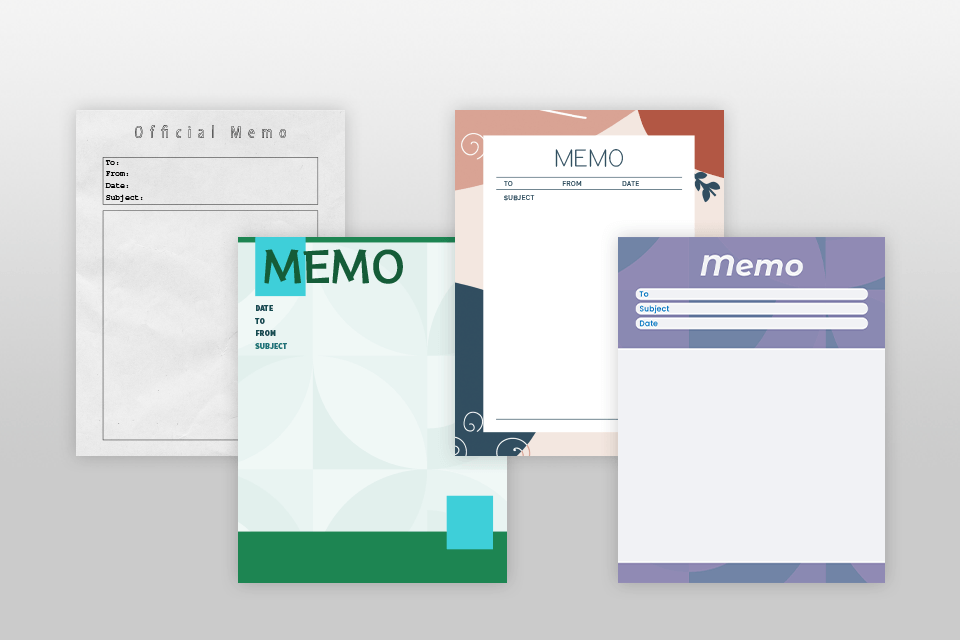
Here’s an example of a memo about postponing the start of a photography project. You can also use it to adjust a wedding photography timeline, for instance.
If you want to understand photography copyright better, this template will be helpful to learn how to correctly write a memo.
You can clarify photography marketing in your company by writing a memo like this one.
Do you need to suggest using photography memes for your marketing strategy? You can try writing a memo like this one to learn how to write a memo effectively.
It's important to know why the memo needs to be written because understanding its purpose will help you create the right context for it. Knowing how to write a memo helps make sure the memo's purpose is easy to understand.
Memos can be written for many reasons, such as:
Keep it Short. Use clear and simple language. Memos should be brief and focused.
Use Headings. Divide the content into sections with clear headings. This makes it easier for readers to find important information.
Add Visuals. Include relevant images or graphics to support the text. Visuals can make the memo more interesting.
Stay Consistent. Use the same font style and size throughout the memo to give it a professional look.
Highlight Key Points. Use bullet points or numbered lists to show important information. This helps readers quickly scan the content.
Use Color Sparingly. Add color to highlight important sections, but don’t go overboard. Stick to the brand colors for a consistent look.
Proofread. Always check for spelling and grammar mistakes before sending the memo. A clean memo shows professionalism.
Consider Your Tone. Adjust the tone of the memo based on who will read it. Make sure it fits the company culture and situation.
A memo has five main parts: Heading, Introduction, Details, Call to Action, and Conclusion.
A memo, which stands for memorandum, is a short internal message that tells a group about a specific issue, solution, or event. Memos can be sent as paper letters, faxes, or attached to emails as PDFs.
Memos are usually one page long with single-spaced paragraphs. They should be clear and quick to read. Since people often scan memos, using subheadings and bullet points can make them easier to understand.
You can write a memo by following these five steps: